Are nail polishes dangerous ?
Organic nail polish !
So far, a 100% natural nail polish (or even 95% as the cosmebio label asks) no longer existed. a few years ago, a market was put on a certified organic varnish, but it had been removed. the only varnish called natural did not contain certain products considered dangerous. recently, the brand Logona developed a certified organic range (natrue and bdih). a true global innovation. The result of a sharp research, its high tolerance formula “5 free” excludes controversial ingredients and minimizes the risk of allergy. the varnishes of this range do not contain formaldehyde, formaldehyde resin, toluene, colophane or camphor. These are the first certified bdih "natural cosmetic" varnishes! find the bottom of this page.
Presence of pollutants in nail polish
Studies have highlighted a possible danger from some nail polishes for European consumers.
According to the latest report of the Early Warning System for Non-Food Hazardous Products (rapex) sponsored by the parliamentary committee of June 26, 2012, some nail polishes on the market would contain toxic products, responsible for cancers.
At the end of 2009, a survey by the General Directorate of Competition, Consumption and Suppression of Frauds (Dgccrf) conducted in the national market revealed in some varnishes, the presence of prohibited phthalates and levels of formaldehyde above those authorized since 1996 (5). %.
According to frédéric vincent, spokesman on consumer and health issues at the parliamentary committee on June 26, 2012, "Prohibited phthalates are the substances most often identified in these products. They come mainly from the United States but also from Europe, especially from the United Kingdom".
The risks to consumers would then seem well established. some environmental chemists in the health-environment network report that "formaldehyde is a carcinogen and phthalates are toxic to reproduction. these substances in varnish can cross the nail and reach the metabolism. as they are volatile, they can also be breathed.".
Question asked to the parliamentary committee on 26 June 2012 by mme christine de veyrac, Member of the European Parliament:
"In the light of these elements, can the Commission indicate whether it is considering developing measures to enhance consumer information regarding the toxicity of certain nail polishes?"
Following this question, mr dalli, on behalf of the commission, inter alia, replied:
"According to the information available to it, the Commission does not consider it necessary to put in place measures to strengthen consumer information regarding the toxicity of certain nail polishes. "
You will find the full answer on the website european parliament
The "hazardous" trio in nail polish
The Parisian newspaper published an article on 12 June 2012 on the subject where the conclusions of the investigation conducted by the dgccrf are found. "Prohibited chemicals or exceeded thresholds. nail polishes, cosmetic stars of summer, are not all without risk. "
What we have retained from the article you can read in full on nail polish is the result of this investigation.
"on the analyzed samples of varnish and hardeners taken from 200 points of sale, approximately 10% were out of the law. It was mainly stocks sold on the markets, braderies, sales, small shops.".
This small sentence is ultimately very reassuring. This suggests that if you buy brand varnishes in known stores and that these products comply with European regulations, it is unlikely that you are concerned!
According to "experts," compounds that can be dangerous and can be found in nail varnishes are in the number of three:
- Phtalates :
Since the history on the bottles, everyone knows these products, but as the inrs reminds them, they are everywhere: " phtalates, produced a few 3 million tons a year in the world, are present everywhere at different levels in our daily environment."
They can enter our body by inhalation, contact or ingestion.
"they have toxic properties for reproduction. the carcinogenic character of some phthalates on rodents has caused concerns. "
See the complete card of the inrs on Phtalates - Formaldehyde :
Formaldehyde is also a well-known product that is found everywhere in our environment. according to the inrs:
"it has strong sensitivizing and irritating properties and available data indicate that the onset of nasopharyngeal cancers is related to its irritating properties. prevention of irritating effects therefore seems essential."
The iinternational cancer research centre (circ) classified it in June 2004 in Group 1: sufficient elements are available to establish a cause-effect relationship between human exposure to the substance and observed cmr effect (cancerogens, mutagenics or toxic to reproduction).
In 2005, following an American study, oms classified it as a certain carcinogen for the man of nasopharynx and nasal pits.
Formaldehyde is a cov (volatile organic compound). it has the property to become gaseous at room temperature and as it is considered an irritating eye, nose and throat, it is better understood why the regulation imposes maximum thresholds.
You will find the complete sheet on the inrs website formaldehyde - The toluene :
Toluene is a very widely used aromatic solvent in the industry. it is classified by the cradle in group 3: substances of concern to humans due to possible cmr effects (cancerogens, mutagenics or toxic to reproduction). appropriate studies have provided elements but are insufficient to classify the substance in category 2 (insufficient evidence).
Therefore it is not considered a carcinogen, nor as a mutagenic and a priori it does not represent a risk for reproduction. it can irritate the nose, throat, and skin by which it can be absorbed. He could harm the child in gestation. it can affect the nervous system.
Short exposure: eye irritation and irritation dermatoses.
High exposure: headache, nausea, dizziness, sleepiness, loss of consciousness, severe irritation, redness, ...
Other information on The toluene and on the occupational health site The toluene
Less allergic, it is unlikely that with a nail varnish bottle you are concerned !
Cov in nail polish
In addition to these three compounds, other elements belonging to the cov family can be found. these famous volatile organic compounds found everywhere and which are also part of the composition of certain nail polishes.
These covs are often in the varnish (see test at the end of the page) but most often they do not appear on the composition. which is logical since they are part of the .secret of manufacture !
In these cov, aromatic compounds such as benzene (ethyle benzene), xylene, toluene but also chlorinated solvents such as dichloroethane are found.
Cov effects are often difficult to demonstrate. they are very variable and depend on individual sensitivity, concentration in air, exposure durations or combinations between products.
It is nevertheless confirmed that, according to concentrations, regular exposure to cov can result in various disorders: irritation of the eyes or throat, allergies, headaches, asthma attacks, urticaria, nausea, fatigue.
Concentration in formaldehyde
Another substance frequently found is the tosylamide formaldehyde resin (noted tosylamide/formdehyde resin). This resin is used to form hard and shiny films, providing excellent wear resistance, while maintaining a great shine to nail polish.
This compound is made from formaldehyde but its chemical composition is totally different. It's not a gas, but a thick, sticky substance.
What does European regulation say?
For products in contact with the skin (use as a preservative) the maximum permissible concentration is 0.2% formaldehyde (0.1% for oral hygiene products). It is forbidden in sprays and aerosols. in the case of hardening products for nails, European legislation imposes a maximum of 5% formaldehyde. This is specific to use on nails, and the skin, especially if it is injured, should not be in contact with the product (a fat body should be applied to the cuticles to protect them). Tosylamide can actually create a contact allergy. Typical symptoms include redness, swelling, itching and blistering.
In addition, the text specifies one important thing: "all finished products containing formaldehyde or substances [...] releasing formaldehyde must return on labelling the mention "contains of formaldehyde" to the extent that the concentration in formaldehyde in the finished product exceeds 0.05%." that means that if you have a varnish sold in europe containing tosylamide but which does not include cylamide.
Attention to labels that mention "without toxic products" since the department of toxic substances control (usa) revealed the presence of significant amounts of formaldehyde, toluene and dbp (dibutyl phthalate) in nail polishes produced with usa. dbp is banned in europe in cosmetics, including nail varnishes, to the extent that it is classified by cradle in group 3: substances of concern to humans due to possible cmr effects (cancerogens, mutagenics or toxic to reproduction). appropriate studies have provided elements but are insufficient to classify the substance in category 2 (insufficient evidence).
Nail polish and paint !
- pigments and deacons for color,
- one or more resins for grip and glossy appearance,
- solvents for a good application of the varnish,
- a rheological agent that brings viscosity and elasticity,
- one or more plasticizers to make the product more flexible,- a film agent that creates a nail film.
Cocktail effect: a potential risk
Without dramatizing, all these substances remain dangerous, because unlike what we think, nails are permeable and therefore are not a barrier to the penetration of these products in our metabolism.
If you feel a product, it is that they contain volatile substances, substances that you will absorb by inhalation.
All these perfectly known substances can create different adverse reactions by interacting with our skin, or our respiratory system. these reactions are not necessarily known.
And even if, in the current state of our knowledge, these products do not pose a special problem, these compounds are almost everywhere.
Moreover the use of a varnish is usually related to the use of a diluent and probably makeup.
All these products used regularly will create what one can call "the cocktail effect.".
Nail polish can therefore present a risk to users. in most cases, this is manifested by allergy or irritation on the parts of our body that have been in contact with our fingers. the nail can also deform and the cuticles can disappear.
The problem is much more for people who use them in their profession like beauticians, massively exposed.
A study conducted in california shows that manicures working in trade shows would suffer from several diseases and diseases ( Chronic asthma, dermatitis, breast cancer) due to exposure to chemicals. it is likely that the varnish is not the only one responsible.
Publication and report on nail polish
1- the composition on the label does not inform us of the actual composition of the product
Article published on 13 September 2013 in Paris: "Endocrine disruptors in almost 40% of beauty products".
Nearly 40% of hygiene and beauty products contain at least one endocrine disruptor (pe,) according to a study made public on Friday to betting.
In summary on nail polish, the article states that:
"According to this study carried out on a basis of 15,000 beauty-hygienic products nail polishes come to mind with 74% of them that contain at least one endocrine disruptor.
These molecules are particularly suspected of having an impact on fertility and of being linked to the increase in the number of so-called hormone-dependent cancers, mainly those of breast and prostate. » the entire article: nail polish
2- the most expensive products are not always the least dangerous
A report on the Swiss television on 05 June 2012 is also very interesting. the first part is a video on the varnish: Toxic nail polish
Under the nail polish, toxic !
The nail polish has become a weapon of mass seduction! for proof, the ranges of colors and marks that break in the cosmetic rays.
Abe decided to scratch the varnish to learn more about their composition and to test their toxicological profile. certain compounds may cause problems because of their penetration into the body.
Part 2 is the varnish test. it includes a video part and a text part in which you will have all the explanations and results: Nail polish test
These tests were carried out on a basis and nine varnishes by a lausanne laboratory
Red dior massai - scarlet vamp de l'oréal - glossfinity ruby fruit de maxfactor pro shine de manhattan (base) - got the blues for red de O.P.I - forever strong red lacquered from maybelline - Anti-Choc de bourgeois - after sex de essie - colour glamorous life de essence - nail polish dark hot red at hm
The covs are sought after: aromatic compounds and chlorinated solvents.
And the chromatograph said " on the 53 covs sought, some products exhibited traces of 20 to 25 of these products. It's still impressive! » especially that nothing indicates on the label their presence !
In the most critical are: Toluene, ethylbenzene, xylenes, styrene, dichloroethane and xylene.
Based on the compositions and measured concentrations, the laboratory considers that: a product is very bad, six are bad and two are good!
The measured cumulative rate of cov between the worst and the best vari of 330 milligrams of cov/kg to 15 milligrams of VOC/kilo!!
After this cov search, the test is followed by a resistance test.
In summary, it's not the most expensive one. whether it is at the levels of these components or its resistance, it can even be seen that the cheapest get out pretty well!
Think about respecting a few rules
If you want to put nail polish, try to respect some basic rules:
1- Have the room, especially if you're pregnant.
2- Avoid overflowing on the skin.
3- Leave naked nails from time to time, without any varnish, this will check their condition.
4- Avoid buying varnishes in braderies, markets or foreign sites. these products may not be at European standards.
5- You prefer nail polishes such as those we market (see below) which, without being organic, are guaranteed without formaldehyde, without toluene and without colophane.
6- In theory, you can also check its composition on the label but only in theory, since in practice, either the text is illegible, or there is not the composition. Moreover, this labelling does not take into consideration ingredients that are not deliberately present, such as by-products and impurities.
It is also possible to search the composition on the internet but it is not simple since most manufacturers do not indicate the composition of their nail polish. Probably not to scare customers !
Our nail polish
1 - the organic varnish of the brand logona (certified bdih natrue)
You were many to wait for it, it finally arrived: the range of natural nail polish certified organic. The result of a sharp research, its high tolerance formula “5 free” excludes controversial ingredients and minimizes the risk of allergy. This varnish contains no formaldehyde, no formaldehyde resin, no toluene, no colophane, no camphor. This is the first certified bdih "natural cosmetic" varnish! the range comes in 5 shades, from the most classic to the most trendy. each varnish offers perfect coverage. the extra-large brush facilitates the application, for a rendering of the most glamorous.
2 - the natural varnish of the sante brand (no organic certification)
We also offer the nail polishes of the sante naturkosmetik brand. you will find varnishes with more addictive colors than others and above all, with a high tolerance formula, without formaldehyde, without toluene and without colophane.
For sublime hands to the tip of the nails, Sante also offers very mild complementary care.










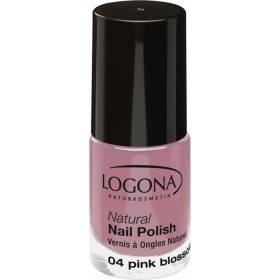
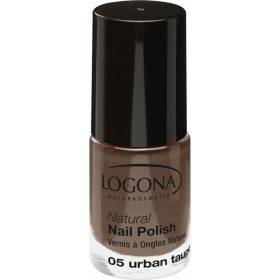
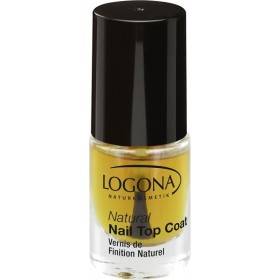
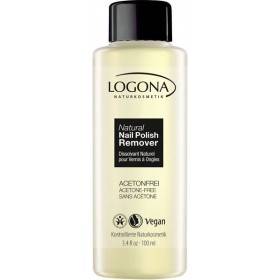
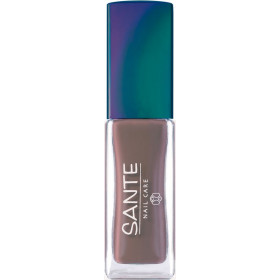
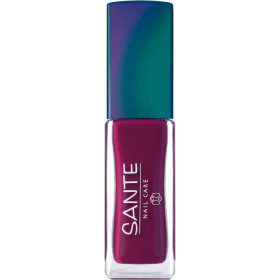
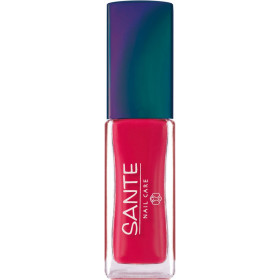
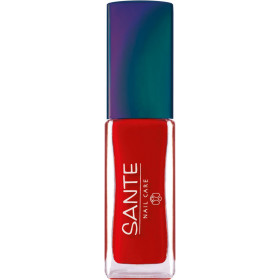
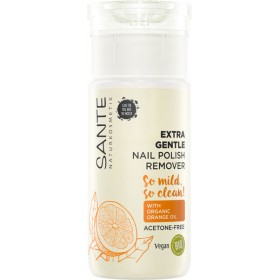
Customer reviews
merci pour le suivi de ma commande et les mails par lesquels vous m'avez tenu informée.
Zoé
Livraison rapide. Produits bien emballés.
Bruno
Un grand merci pour votre professionnalisme et la qualité de vos produits. Longue vie à votre site.
XX
Merci beaucoup pour l'info, c'est rapide chez vous, très appréciable!
Denis
Livraison rapide et bien emballé. Petit message manuscrit qui fait plaisir :)
xx
colis dans les temps,emballage parfait,super accueil téléphonique pour renseignement, je recommande ce site.
ROSCO
Un plaisir de recevoir les colis soignés et respectueux de la planète de Penn’Ty Bio. Merci
k.
Service au top !!!<br /> Colis reçu très rapidement avec un petit mot manuscrit me remerciant de ma commande et de la confiance que je leur ai témoigné <br /> Suffisamment rare pour être signalé <br /> Je vous encourage toutes et tous à les soutenir en passant commande chez eux!!!!<br /> Longue vie à Penn’Ty Bio !!!!<br /> Ils le méritent
Pierre-Steph
Je voulais juste vous remercier. J ai reçu mon répulsif " lézards" aujourd'hui, un petit mot super gentil joint à ma commande ça fait plaisir. J espère que ça va fonctionner. Bonne journée à vous et merci.
Cynthia
MERCI au personnel à l’emballage !!! Ma dernière commande était super bien emballée. Elle a résisté aux (épouvantables) chocs subis pendant le transport. Merci
Veronique
On ne peut pas toujours faire confiance à des sites de ventes sur le web, mais sur Penn'Tio, j' y viens les yeux fermés. Excellente communication avec le service clientèle, un suivi sérieux. Je remercie chaleureusement toute l' équipe.
Sergine T.
Des produits très efficaces quand on suis dans l'ordre le traitement. Un léger petit bémol sur le spray insecticide, si possible essayer de trouver un spray plus puissant et plus large pour une diffusion optimale dans les coin et recoin inaccessible. Sinon tout est nickel est une excellente qualité de résultat.<br /> PS: Il faut prendre tout les produit pour un traitement efficace en foyer privé (maison).
Florian G.
Comme toujours service "au top" réactivité, qualité produits... BRAVO et merci pour la qualité de votre travail
Annick
Hélène
Commande reçue rapidement, très bien
XX
accueil téléphonique personnalisé réactif compétent et bienveillant, livraison rapide et conforme. BRAVO merci pour la qualité de votre travail
Annick
Livraison ultra rapide, bien emballée. Produits au top. Parfait !
Caty
Livraison rapide et très bien emballé et protégé. Très bonne efficacité. <br /> <br />
XX
Félicitations pour la qualité de votre site & la valeur de ses informations ! Continuez ainsi ! On a besoin de vous !
Ronald
Commande tout à fait conforme et emballée avec grand soin.
Sarah
Franchement, Penn'ty bio, c'est top ♥<br /> Quentin est super réactif, de très bons conseils. Encore merci de votre efficacité.
Hélios ☼♥
En cette période d'avant Noël, je craignais que me colis arriverais en retard. 48h après mon achat, c'était dans la boîte aux lettres. Du coup, je suis large pour mettre mon achat sous le sapin. Merci à vous
Art4
Commande bien reçue;je suis tout à fait satisfaite;à bientôt
Sonia
ANNE
Livraison rapide, emballage plus que parfait, le diffuseur NEOLIA est merveilleux pas bruyant, fonctionnement idéal. Merci PENNTYBIO pour votre sérieux, site web à recommander.
CLAUDE
Un grand merci pour votre offre et votre professionnalisme. Pour un service en ligne, vous savez vous rendre proche de nous. Bravo et "suerte" !
Pierre M.
j'ai bien reçu la commande et je vous remercie pour votre efficacité.
Margot
Site intéressant proposant de bons produits, attractifs et respectant la nature. Le regret c'est le prix de certains articles.<br />
Catherine
Sav rapide et disponible. Au top
Severine
Produit de qualité conforme à mes attentes, envoi rapide et soigné, très bien.
Anne
Parfait.
Philippe
Rapidité de traitement et petit mot avec le colis très appréciable.
XX
Excellentes prestations. Les produits sont formidables, l'emballage aussi. Les délais d'expédition compétitifs. Je recommande vivement Penn'Ty Bio à tous ceux que l'état de la Planète pour les générations futures inquiètent.
XX
Livraison rapide et fiable, dès que le chèque a été reçu. Produits de bonne qualité.
Chantal H.
J’ai bien reçu le nouveau diffuseur fonctionnel après essai et je vous remercie pour votre confiance et votre rapidité sur le traitement de mon problème. Ce n’est pas tous les jours que l’on voit un SAV aussi efficace !
Florent
Produits d'excellente qualité, arrivés rapidement, et conformes à leurs descriptions.
Michelle G.
J'ai été TRES bien conseillée lors du contact. Produit naturel donc c'est parfait.
Lilla
Bonjour Sophie et Quentin,<br /> Je viens de recevoir ma commande et je tenais à vous remercier pour la rapidité de l'envoi, votre gentil petit mot et le petit présent qui sent bon et donne envie. Bel été à vous deux également
Geneviève
Livraison toujours rapide. J'ai expérimentée le service après vente qui à été excellent avec une réparation rapide et sans frais. Je recommande vivement Penn'Ty bio
Nadine
Sav très réactif et efficace suite à avarie durant transport. La livraison du produit en remplacement du colis défectueux à été particulièrement rapide. Merci.
Valérie
Merci pour votre démarche si respectueux de l’humain, des animaux et de l’environnement !
A.F
Super !
Yann
Les produits sont de bonne qualité. Leur prix est raisonnable. Ils sont livrés rapidement, et en bon état.
XX
J'ai enfin reçu le petit colis, hier. Il a mis un mois pour me parvenir, mais vous n'y êtes absolument pour rien, comme je le pensais, il a été mis de côté lors de la grève nationale. Je vous remercie d'avoir fait faire des recherches, j'ai reçu un mot de la poste.
Hervé
Très satisfaite des délais, les produits sont bien emballés et le petit mot sympathique est fort agréable!<br />
Sylvana
Merci pour votre envoi : rapidité, ponctualité, information de suivi du colis etc. Vraiment du bon boulot.
E.G
Très bien...merci.
Olivier
Fiable, et très bons produits , Service après vente efficace et sympathique.
Vilma V.
Très contente des produits de qualités et une commande reçu très rapidement. Merci
PATRICIA A.
Bonjour. Je souhaite vous remercier pour votre rapidité. Le colis est arrivé en bon état . Les huiles que nous avons commandées embaument la maison. Ce diffuseur est génial.
Christian
Colis bien arrivé. Emballage remarquable. Diffuseur très joli, très efficace et peu bruyant avec de la couleur qui change. Très satisfaite de la commande.
Sabrina
1ère commande. Très satisfaite : Colis expédié très rapidement et bien emballé. Merci pour votre sérieux.
Ghyslaine
Site clair, envoi rapide, marchandises bien emballées, et un petit mot charmant!
SM
Un grand merci pour cette commande envoyée très rapidement. Je recommanderais votre site
Elise
Très bon produit facile en entretenir, pas cher.
XX
Très bon site, du personnel sérieux et la livraison en temps et en heure. Merci
Marine T
Merci beaucoup le colis est arrivé à la poste hier et je te retire aujourd'hui Merci pour votre efficacité et votre rapidité
Ingrid
J'ai passé ma première commande, chez vous il y a trois jours à peine et ce matin, je reçois mon colis.
Sophie
C'est extrêmement délicat de votre part d'avoir fait diligence. Je ne manquerai pas de recommander votre site et de souligner votre gentillesse. Encore merci
Michel
merci de votre disponibilité et amabilité!
Eric
Beaucoup de soins dans la commande reçue. Je recommande!
XX
Louise
Très bons produits, service rapide et de qualité, rapport qualité/prix intéressant. Je recommande vivement.
Alain
Après 2 traitements à 3 jours d'intervalle, j'ai réussi à éradiquer toutes les punaises de mon canapé. Produit hyper efficace que je recommande vivement.
Emmanuelle
Françoise
Commande bien reçue ! Bien emballée ! ! ! Jolis produits ! Merci !
AYH
Une utilisation de vos produits a suffit pour nous débarrasser des poissons d'argent. Merci.
Matthieu
Vos explications par email ont été très claires et votre diligence dans le traitement de ma commande et de mes demandes est très appréciée.
Henri
Livraison rapide , le tout correspond à mes attentes.
Julie
Toujours satisfait et pour les prix et pour les produits.
andré a.
Explication, commentaire et livraison en un temps record, tout était parfait, même le petit mot de remerciement écrit à la main ! Merci beaucoup
Monique S.
Efficace rapide et à l'écoute. Diversité des produits. Efficacité des produits. Respect des délais de livraison et prise en compte des spécificités client PMR ( ce n'est pas toujours le cas). Site bien fait pour navigation et produits bien mis en valeur. Des promos et des bons de réduction cumulés en fonction des achats. Merci pour votre efficacité rapidité et professionnalisme.
xxx
Merci pour votre geste que j’apprécie.<br /> Cela fait plaisir de retrouver l’esprit commerçant de proximité chez un vendeur en ligne. Je surveillerai attentivement cette nouvelle livraison.
Philippe
Service clientèle très réactif en cas de difficultés. Livraison rapide. Emballage des produits fragiles excellent. Maison sérieuse, je recommande.
Marie
Super, envoi rapide,bien protégé et petit cadeau !
xx
Très satisfait de Penn'Ty Bio : choix étendu,prix raisonnables délais de livraison rapides.
xx
Site très sérieux et personnel vraiment agréable. Envoi rapide. C est parfait !
Ingrid
Tout à fait satisfait de la qualité de la livraison ainsi que du produit commandé.
Régis
Livraison en temps record à l'adresse indiquée en France puis départ dans l'océan indien. Reception des produits en quinze jours à l'autre bout du monde : ravie. Je vous laisserai les avis produits une fois utilisés. Le site est très bien fait et très agréable à utiliser. Le petit mot à la main dans le colis humanise la transaction, je l'ai apprécié. Je pense que vos produits sont très utiles et je vous souhaite une belle réussite et sur la durée.
Sylvie D.
Je suis très satisfaite de mon échange avec le service client (personne à l'écoute, de bon conseil). Envoi rapide et soigné, avec un petit mot sympathique de l'équipe, le top!
XX
j'ai reçu mon colis aujourd'hui, merci c'est très rapide et sérieux.
Nathalie
Parfait. Rien à redire. Extrêmement efficace.
Quentin
J'ai reçu mon colis hier. Merci de vos démarches,
Sam
Pas encore essayé le produit, mais le site est très sérieux. Livraison dans un temps éclair, même si je suis en Belgique. Emballage soigné. On peut faire confiance.
Roberta
Rien à redire, de la commande à la livraison.
XX
J'ai bien reçu ce jour, en bon état, les 2 diffuseurs galets. Merci aussi pour votre petit mot manuscrit me souhaitant un bel été. Fidèlement,
Annie
J'ai été très déçue de ne plus trouver mon déboucheur dans mon biocoop habituel, et perplexe en apprenant qu'il était remplacé par un produit à base de soude...c'est comme ça que je vous ai trouvé sur internet.<br /> Alors merci pour le dépannage, pour le mot gentil qui accompagnait mon colis , et bravo pour le calage en amidon de maïs compostable!<br /> Bravo pour votre démarche et à très bientôt.
Cécile D.
Satisfaction totale. Entreprise au top. J'ai téléphoné le lundi matin, malgré que les contacts téléphonique ne sont que l'après midi, une personne très charmante m'a rappelé presque aussitôt pour mes donner les infos que je souhaitais connaître sur ma commande. Bravo. nous sommes mercredi et ma commande est arrivée. Encore bravo continuez comme ça.
Jacques M.
Livraison rapide et soignée. J'utilise les produits bio qui sont de très bonnes qualités. Un savon m'a été envoyée par erreur à la place de celui commandé et il m'a été remplacé très rapidement. Bravo pour leur réactivité. Je recommande fortement ce site.
Liliane
Toujours très bien et parfaitement emballé ! Merci<br />
Valérie
Quel dommage pour le produit manquant, je vous remercie pour le remboursement.
Didier
Super efficace !!!
xx
Alex
J’ai découvert cette société en faisant une recherche sur Internet pour trouver un insecticide contre les sclérodermes. Je ne peux pas encore juger l’efficacité de chacun des produits par contre je suis très satisfait de la rapidité et de la qualité d’expédition, ainsi que du sérieux de la société. J’ai même reçu un petit échantillon est un mot personnalisé j’ai trouvé ça très sympa! Merci beaucoup et bonne continuation pour votre société que je recommande déjà.
BJ79
Merci pour votre sérieux et la réexpédition ultra rapide d'un achat non conforme (dont vous n'étiez pas responsable).
Marc
Je suis cliente depuis de nombreuses années. Toujours satisfaite du site, des produits et de la livraison.
martine O.
C'est vraiment magnifique et ce cadeau a plu, je commanderais pour Noël.
Martine
Je voulais non pas faire une réclamation; mais vous féliciter pour vos produits que j' ai bien reçue, et également pour la rapidité de votre envoi ce qui est plutôt rare dans d'autre site.
Jérôme
trés satisfaite de ma commande,( produit, et livraison,rapide ) MERCI
Danièle M.
Merci à Penn'Ty Bio pour la qualité des produits, la réactivité de l’Équipe et le petit mot attentif qui accompagne les colis. Votre site est précieux !!
Veronique B.
Site de grande qualité !
Rose Anne Marie
Site très pratique. Commande aisée. Suivi régulier. Délai de livraison respecté. Colis très soigné. Tout est parfait.
Nicole
Pennty bio prends le temps de renseigner et donne de très bons conseils.<br /> Les produits sont emballés soigneusement et la préparation des commandes hyper réactive. Je recommande les yeux fermés !
Mattloumag
Bravo ! je vous félicite pour votre efficacité ne manquerai pas de vous conseiller. Merci à la prochaine commande
Anthony
Site internet complet, beau et facile d'utilisation<br /> Commande complète et correcte.<br /> Commande emballée a la perfection avec du matériel recyclable, compostable<br /> Délai d'envoi respecté même a l'étranger (Pays-Bas)<br /> Mention spécial pour le petit mot personnalisé ++<br /> On sait pourquoi on commande chez Penntybio depuis 10ans :)<br /> Bonne continuation
Jennifer A.
Jean Claude
Merci pour le geste commercial, et aussi pour les nombreux conseils et l'excellent service client.
Tristan L
Juste ce petit mail pour vous dire que j'ai bien reçu votre colis et que mon patron est enchanté ! Ca embaume les huiles essentielles dans le bureau et... ça ne fait pas de bruit ! Encore un grand merci pour votre gentillesse et votre souplesse commerciale.
Sonia
2 commandes à mon actif et jamais déçue. Vous avez gagné une cliente régulière :) Merci pour votre sérieux et le contenu bien rempli de votre site ! c'est super d'avoir une description hyper détaillée de chaque produit.
clara
Bonjour Sophie & QUENTIN, Merci pour votre petit mot. . . . Ça fait chaud au Cœur de voir qu'il y a encore des Gens Comme VOUS sur cette planète ! Le monde devient de plus en FOU ! ! ! Cordialement.
Dominique T.
Envoie soigné et rapide.<br /> Merci pour le petit mot à la main.<br /> Très appréciable.
XX
Très bonne adresse où l'on trouve des alternative aux produits chimiques notamment contre les insectes. Le service client est également de très bons conseils.
ck
Très bien, je recommande cette boutique
Salomé
Cliente depuis plusieurs années. Super service, réactif, cordial. Les produits sont excellents.
Christine
Toujours aussi "réactif" et efficace<br /> Bravo et merci pour votre professionnalisme.
Annick P.
L’esprit commerçant de proximité chez un vendeur en ligne !
Philippe
Diffuseurs qui sortent vraiment de l'ordinaire, un envoi parfait - merci BCP
Anthony
J'adore. Très grande diversité de produits, les explications sont simples et complètes.Quand aux colis, ils sont extrèmement bien protéger. Un grand merci.
Nadine
Je confirme efficacité sur la préparation et expédition du matériel. un grand merci
Jeremy
Merci à Penn'ty bio d'avoir garder beaucoup de produits de la marque Lerutan et pour le sérieux dans la préparation et l'expédition des colis. Je recommande.
SR
Livraison rapide et petit mot manuscrit joint au colis, vraiment très sympa! Merci et continuez, vous le méritez.
Jean-Pierre
Site très sérieux, de très bons produits et la livraison est rapide.<br />
Isabelle
Colis parfaitement emballé et produits conformes. 1 des produits était très fragile et est arrivé en excellent état, merci :o) Pourquoi achetez à l'étranger alors qu'on a de si belle s entreprises en France? Tarifs identiques ou moins chers que chez Amazon ;o)
Stéphane C.
Tout était parfait l’envoi la livraison merci beaucoup
XX
Je vous remercie de votre professionnalisme et de votre réactivité.C'est loin d'être toujours le cas lorsque l'on commande sur internet.
Gaëlle
Efficace, livraison rapide.<br /> <br />
H
Infestés de puces de parquet, le produit a agi en moins de 24 heures. Livrés en tout autant de temps. Le seul produit qui ait fonctionné et en plus archi cool pour la nature.
Nicolas
Excellente communication, service très rapide (même à l'étranger), emballage parfait ...
Jacques N., Belgique
I had a marvelous experience with ordering and everything ! Thank you for a great service.
XX
Très rapide pour la livraison en Belgique et sérieux. Merci<br />
Corinne
Je tenais à vous remercier pour votre service de qualité, une livraison toujours rapide, des colis bien emballés - qui évitent fuites et casse, ainsi que pour le petit mot personnalisé joint à chaque commande, c'est toujours très agréable.
Isabelle G
Parfait ! Envoi rapide et produits de qualité. Merci pour le petit mot. Je suis très satisfaite !<br />
Julieanaïs
Super produits, envoi rapide et soigné, conseils et échanges courtois ! Une jolie boutique en ligne pour acheter en toute confiance ! <br />
Patricia
Content des produits achetés, reçu rapidement et bien emballé. Merci.
XX
Bonjour, colis bien emballé arrivé sans encombre, démarche écolo bien ancrée et petit mot perso. Merci à l'équipe de Penn'Ty Bio.
Sofi
Ravie de découvrir un site qui présente des produits de qualité avec une vraie démarche éco responsable à des tarifs intéressants.
XX
livraison tip top tant en temps et en qualité.
XX
Livraison conforme et rapide. Les produits sont emballés dans des emballages recyclables, voire compostables : j'ai beaucoup apprécié. Je recommande ce site.
Patrick
Service très réactif, emballage soigné , livraison rapide. <br /> Rien à redire . Continuez !!
Sophie
Nous sommes très satisfaits du service client : mot personnalisé dans le colis, disponibilité du service après-vente... Nous souhaitons à votre société un succès croissant.
Sara
Merci beaucoup pour votre rapidité et votre professionnalisme.
Julie
Bon produit. Merci Penn'Ty Bio. Un seul passage dilué à 5% et les puces ont disparus. Il en restait deux ou trois qui ont dû se perchés pendant le traitement mais sinon c'est performant.
Axel
Très satisfait du site livraison rapide.<br />
Michel
Boutique sérieuse. Commande arrivée très rapidement. Merci pour votre gentil mot avec la facture.<br /> <br /> <br />
I Defoy
Parfait comme site, commandes faciles à faire et livraison rapide !
Cindy
Un grand merci pour la qualité et la rapidité de votre réponse.
Simon
Une boutique en ligne, sympa et très réactive. On apprécie surtout la livraison express. Pas besoin d'être américain pour livrer dans des délais de champion !<br /> <br />
Daniel de Paris
Tout était parfait. Produit, prix, délai.
Marco
Très satisfaite.
Louise
Merci pour l'expédition de la pièce de verrerie qui a été recu cette fois sans casse. Meilleures salutations et à très bientôt sur votre site pour un prochain achat .
Louane
Avec les trois lettres BIO dans votre nom, je ne m'attendais pas à découvrir des billes de polystyrène comme matériaux de rembourrage. Il y a certainement plus écolo !
Michel D.
Envoi rapide et soigné, produits efficaces et réponse rapide à mes questions. Je recommande.
xx
C'est ma première commande chez Penn'Ty Bio, et ce ne sera pas la dernière.<br /> J'étais à la recherche d'un nouveau diffuseur d'HE et, après discussion avec Quentin, mon choix s'est arrêté sur l'Elixia (Direct Nature) qui est d'une efficacité redoutable et d'un silence absolument surprenant.<br /> La livraison s'est faite en 72h en point retrait avec un conditionnement hyper sécurisé.<br /> Lors du déballage, j'ai constaté un léger défaut de finition sur la verrerie.<br /> J'en ai fait part à Quentin par texto avec photos à l'appui.<br /> Il m'a aussitôt recontacté pour me proposer un envoi d'une nouvelle verrerie dès que disponible.<br /> Un professionnalisme et un sens du service exemplaires qui font de cette enseigne une valeur sûre.<br /> Penn'Ty Bio est vraiment la boutique en ligne qu'il vous faut connaître.<br /> Je vous la recommande vivement.
Jean-Yves S.
Bonjour, j’apprécie depuis longtemps votre travail : la qualité de vos informations et des produits que vous vendez.
Frederic
J'ai reçu le colis, merci beaucoup de votre promptitude et bonne continuation.
Louise
Emballage au top. Livraison rapide et sans dégâts.
xxx
clair net précis. merci
jannick
Bonjour <br /> C'était ma première commande sur votre site et j'en suis très satisfaite <br /> Je vous remercie pour votre professionnalisme (site, prise de commande, livraison) ainsi que pour le petit mot qui rend le tout humain. Très belle journée.
CG
Bonjour Monsieur,<br /> Nous nous étions parlés au téléphone il y a quelques années. Bravo pour l'évolution de votre site et vos dossiers instructifs. Vos produits aussi sont très bons. Bonne continuation, bien cordialement.
Marina
Jamais déçue : les produits correspondent à la description et sont livrés rapidement.
Mireille
Très satisfaite de ma commande. Emballage soigné et envoi rapide. Merci beaucoup pour votre professionnalisme !
Sophie
Marie-Noëlle
Site sérieux, proposant de bons produits, efficaces en particulier sur les punaises de lit, fléau actuel. Merci car entre les produits et les housses de matelas nous avons réussi à les éradiquer dans deux maisons à deux ans d intervalle. <br /> Bravo aussi pour la livraison la plus écologique possible.
L.C
Très satisfaite. Je recommande cette société sérieuse. bon suivi de la commande.
Sandrine
Je parlerais de vous a mes amies car vos produits sont vraiment excellents. Bien a vous et tous mes remerciements.
Patricia
Produits conformes aux descriptifs. Délai de livraison respecté. Satisfaite du nébuliseur qui est superbe.
VR
Très satisfaite du produit.Rapidité et emballage très soigné.SERIEUX.
MARLENE
BIEN,CONTINUEZ COMME çà.
XX
Envoi rapide, emballage au top, continuez comme ça... :-)
bruno b.
Livraison rapide , produits de qualité, je recommande Penn'Ty Bio.
XX
Après essais de divers produits, votre insecticide 4J est le seul à être venu à bout des puces ramenées par le chat de la maison. Livraison rapide par chronopost
JEAN MARIE
Les produits achetés sur le site sont de très bonnes qualités, et j'ai été très bien conseillée. Je recommande !
Aurore
livraison rapide, produits bien enveloppés avec juste un petit bémol : pour l'imperméabilisant dont le couvercle n'était pas bien fermé.
Alain
Comme d'habitude, envoi soigné, produits performants, Merci.
XX
Bon produit mais frais de port un peu cher.
Marie Paule
J'ai bien reçu mes articles et je vous remercie pour la livraison rapide et impeccable !
Françoise
Site sérieux. Bons produits.
Magali
Penn'Ty Bio wonderfully served our family in Switzerland so that we could try the range of Totemsavon products, which are such caring, loving, and consciously manifested creations :)<br /> <br /> By allowing a shipment to Switzerland and elsewhere, I am sure so many more people would be able to benefit from the beautifully selected product portfolio in Penn'Ty Bio and all, together, make a conscious leap by using and demanding a way more purer approach to anything we interact with.<br /> <br /> Thank you so so much Penn'Ty Bio!<br /> <br /> In 8 Love We Heart Trust<br /> <br /> Miguel Ángel
Miguel Ángel
2 commandes à mon actif et jamais déçue. Vous avez gagné une cliente régulière :) Merci pour votre sérieux et le contenu bien rempli de votre site ! c'est super d'avoir une description hyper détaillée de chaque produit.
Magali
Bien, la majeure partie des produits sont efficaces. Je connais cette boutique depuis plusieurs années, je recommande ce site.
XX
très bien livraison dans les délais, colis intact, bon produit.
Martine
Excellent site. Très à l'écoute. Livraison rapide. Problème avec un piège à guêpes un autre m'a été livré très rapidement. Chapeau et très agréable de tomber sur des gens compétents.<br /> Encore merci.
XX
livraison rapide, produit conforme.Prix séduisant.
XX
Juste un petit mot pour vous remercier du message accompagnant mon colis ! Je croise les doigts pour que les produits marches mais entre-temps, je voulais vous remercier et en profiter pour vous souhaiter à mon tout un joli printemps.
Rose B.G
Bon produit, efficace et laisse une odeur plutôt agréable. Expédition rapide, emballé avec soins. Je recommande
Mary
Je viens de recevoir la pastille noire aujourd'hui et je vous remercie de votre envoi gratuit (ce qui est rare de nos jours).
Laurence
J'ai bien reçu le diffuseur et j'en suis très content.
Paul
Service de qualité, suivi rigoureux et rapidité au rendez-vous. Mon colis est arrivé vite même avec un paiement par chèque. Les produits sont très fidèles à leur description et pour un coût serré. A recommander fortement.
Vincent
Excellent!! Commande passée le lundi, reçue le mercredi!!! Les produits sont en plus de super qualité !
MADELINE
Prix intéressants. Expédition super rapide à bon prix. Et tout ça de façon agréable !
Alexis M.
SATISFAITE
ANNE
Entièrement satisfaite.
Ch. D.
Je tenais à vous remercier pour la commande que je viens de recevoir ce matin. Merci beaucoup et je n'hésiterai pas à recommander sur votre site.
Sandrine
Fidèle à votre marque, je tenais par ce mail à vous féliciter vous et votre équipe pour votre longévité. Votre marque est toujours gage de qualité et sérieux.
Céline
très satisfaite de ma commande site vraiment sérieux livraison soignée et rapide ,les articles sont conformes a la description,je suis enchantée et recommande vivement
Marie Viviane C.
Bonjour, je voulais vous féliciter pour la clarté de votre site, la rapidité de la livraison et la qualité de l'emballage.
catherine R.
Produits de bonne qualité, naturels et efficaces, expédition rapide et bien emballée, sav très rapide suite à une erreur de ma part,
XX
Suite à un précédent message notifiant une erreur de produit à la livraison, Penn'Ty bio m'a fait parvenir à titre gracieux le bon produit. Merci
Martine
Après un souci sur l’article livré, le site a fait preuve d’une excellente communication (simple et efficace par sms) qui m’a permis de me faire livrer un 2nd article par la marque très rapidement. Parfait !
Pierre
Boutique très sérieuse avec un envoie rapide et des produits super efficaces.
XX
produit parfait.
René
Commande facile, livraison impeccable et produits fiables. Merci.
Isabelle
Je vous remercie beaucoup de m’avoir fait profiter d’un acheminement par Colissimo alors que rien ne vous y obligeait, sauf votre conscience professionnelle, chose rare de nos jours et qu’il ne faut jamais manquer de souligner.
Cécile
Je me permets de vous écrire un petit mot afin de vous dire que votre site est très bien fait.
Tom
Service très professionnel et très rapide. A conseiller fortement.
Didier M.
Très bons produits je les recommande.<br /> Merci à Pennt'ty Bio pour tout, aussi bien pour les commandes et les emballages.<br /> Bravo Pennt'ty Bio.
Bernadette G.
excellent.
XX
Les produits commandés sont conformes à mes attentes. Quant à l'accueil au téléphone, il est parfait et nous avons toujours trouvé un terrain d'entente. Je fais confiance à Penntybio.<br /> Merci.
XX
Excellents produits. Excellent service.
James T
service très efficace à chaque fois que j'ai commandé. aucune mauvaise surprise sur la livraison. je recommande
Agnès
Produits livrés rapidement dans un colis non surdimensionné, les produits sont conformes à la description. Je recommande vivement ce site très bien fait !
Hervé
Très bon produit, conforme à la description.
MICHELE P.
Merci à tanteOdile pour m’avoir fait découvrir votre site. Depuis je suis une cliente assidue. Très satisfaite de la rapidité des envois, de la qualité de vos produits qui sont par ailleurs très bien détaillés par leur composition et leur mode d’emploi. Une amie vous a rejointe également avec la même satisfaction <br /> Continuez.
Marité D.
bravo pour votre réactivité et la qualité des produits
Annick P.
Livraison très rapide; Tout était parfaitement emballé. Je referai appel à vous.
JV39
C'est la deuxième fois que je commande sur ce site. J'ai découvert qu'il existait des verreries aux dimensions différentes. Mon diffuseur étant ancien, j'ai chercher le modèle le plus adapté et j'ai trouvé! Mon diffuseur fonctionne à nouveau
Christiane D.
Bon produit , envoi rapide.<br /> <br /> <br />
Christine
Livraison rapide et avec colis préparé avec soin :)
Florian
Produit performant et raisonnable au niveau prix. Je recommande
XX
Très bon site, très sérieux je recommande, produits de qualité et service après vente au top, de plus livraison des plus rapide et produits très bien emballés, tout est parfait
virginie
Efficacité redoutable. enchanté.
Robert
Excellent service après vente après un problème d acheminement de colis par la Poste. Une relation client de très grande qualité. <br /> Cordialement,<br /> <br />
PV
Penn' Ty Bio, c'est ma référence depuis 10 ans au moins. Je ne commande mes produits de toilette et d'entretien que chez eux. Les marques et le service est irréprochable.
GAELLE
Tout est parfait à chaque fois. L'attention portée va même jusqu'au petit message, c'est agréable. Fidèle aux produits et au site plus que jamais.
xx
Produit conforme aux attentes.<br /> <br /> <br /> <br />
Alain
Excellent site rapide et efficace. Descriptif intéressant.
XX
Commande reçu en 2 jours, impeccable. Tous les produits emballés avec le plus grand soin, petit mot personnalisé! Et encore un petit savon bio au parfum délicieux comme cadeau!! Merci Penn'Ty Bio !!
Orchidée
Commande bien reçue . Je suis très satisfaite Merci pour votre sérieux
LILIANE
Au fil de mes commandes (j'en suis à la 5 ou 6ème) décidément, du sérieux et de l'écoute ! chaque fois que j'ai eu un petit problème: contact immédiat, réponse immédiate, et tir rectifié illico ! Dans le top 5 de mes sites internet !
Vincent
Commande bien reçue. Je suis tout à fait satisfaite. A bientôt.
Tania
Très bien , bon produits, La prochaine commande avec plaisir, livraison très rapide.<br />
Rainer
Vos produits sont de bonnes qualités et les produits très bien emballés
Dominique
Pour ma part j'ai été satisfaite de la réalisation de ma commande et du délai de livraison. Je recommande votre société.
Nelly
J’ai bien reçu mon colis et vous remercie de votre rapidité. Bravo pour le geste écologique et durable. Emballage nickel ! Et mon chat a adoré jouer avec les billes jaunes !
Anouk
Dommage, les vendeurs ne savent pas lire les indications inscrites sur les produits qu'ils vendent
XX
Je suis vraiment très satisfaite de la prestation de ce fournisseur : délai de livraison très rapide et emballage des produits réalisé avec un maximum de soin. Bravo !!
Eliane
Service de qualité, suivi rigoureux, et rapidité au rendez-vous. Les produits sont très fidèles à leur description et pour un coût serré. A recommander fortement.
JACKY
Livraison efficace et bon contact oral avec mon interlocutrice.
Maussane
yvette
Noëlle G.
Livraison très rapide et produits bien emballés.
Catherine
J'ai bien reçu le colis sans aucun problème. Merci pour la rapidité et le sens du service.
Nicolas
Mon avis sur penntybio, très bon produit sur ce site pas une gamme monstrueuse mais que du très bon, et pareil pour les livraisons ultra rapides et le excellent sav si besoin. Je recommande vivement. Client depuis 2018 aucun soucis.<br /> <br />
thierry g.
Site intéressant. Je l'ai découvert, en fait. Produits ménager éco-responsable. Bon pour la maison et non agressifs. Merci.
Mydiadao
Les produits ont été très appréciés par la destinataire. <br /> De plus quand on pose une question, on a toujours une réponse, un conseil très rapidement. Merci pour votre réactivité
xxx
Je suis une amie de vos parents et suis toujours très satisfaite de tous vos produits. Ne changez rien et bonne continuation.
Marité D.
Cliente fidèle depuis plusieurs années, je ne peut que recommander ce site. Tout est parfait. Tous les produits au top, rapidité d’envoi, gentillesse, allez y les yeux fermés vous ne serez jamais déçus.
Marité 06
Bons produits conformes à mes attentes et livraison au top. Je recommande vivement.
Chantal P.
Envoi rapide et soigné. Emballage ecoresponsable. Je suis ravi d’avoir trouvé des pièces de rechange pour les diffuseurs à huiles essentielles!
Ina L.
Je trouve l'essentiel sur le site à des prix défiants toute concurrence. Continuez comme cela.
XX
Livraison très rapide et produits intacts à l'arrivée grâce à un emballage impeccable.
Etta
Je voulais vous remercier +++ pour votre gentillesse et surtout... votre compétence. C'est vraiment de l'excellent travail... j'ai été bluffée :-)<br /> Renseignement téléphonique 10/5 - produit 10/5... encore merci
Maryse
Les produits achetés sont excellents. Ils répondent parfaitement à ce que je cherchais. Bravo pour votre site
Michel
Bon rapport qualité-prix. Envoi rapide et sécurisé !
Chrile
Commande reçue rapidement, frais de port raisonnables pour expédition à l'étranger et les produits sélectionnés au top! Merci!
Cédric Adolphe B.
Excellents services, très serviable
XX
Maryse
Bravo pour votre sérieux. Colis reçu très vite et produits impeccables. Belles fêtes de fin d'année
Mat
Service rapide et efficace. Bons produits
XX
Une grande compétence, Monsieur Dufil est très professionnel et sait soigner ses clients. Quand à la gamme de produits proposés, elle est parfaite et complète.
Alain A.
Merci pour tout le soin que vous mettez pour une livraison individualisée, chaleureuse et aussi peu impactante que possible sur l'environnement !
Sandra
Tout va bien. Bonne année 2021.
Bernadette M.
Jean-Yves
Très bons produits efficaces.
XX
Cela fait plusieurs fois que je commande chez Penn'Ty Bio et je suis toujours satisfaite de la qualité des produits et de la rapidité d'expédition. Je recommande ce site !
Ghyslaine
Très bon produit juste ce qu'il faut à prix attractifs Envoi rapide.
xx
Site très réactif livraison rapide le produit Stop tique et puce est parfait sauf le pulvérisateur.
Danielle B.
Excellent article sur les diffuseurs d'huile essentielles ! grâce à lui j'ai pu faire mon choix basé sur une excellente analyse de votre part !
Laurence
Très satisfaite par Penn ty bio. En effet, suite à un produit défectueux ( housse matelas) , j'ai aussitôt reçu un bon de retour pour renvoi gratuit en colissimo et ai reçu la nouvelle housse dans les 48 h, avant même le renvoi de la première housse. Merci pour la réactivité et la confiance de cette entreprise.
dominique B.
Après la découverte des punaises de lit dans 2 chambres de notre vieille maison, j'ai trouvé votre site. le dossier m'a été très utile et je suis très contente d'avoir trouvé des produits moins toxiques que ce que proposent les autres sites de vente.<br /> Je vous remercie d'avoir répondu à mon mail car c'est un peu l'affolement quand on découvre chez soi des punaises de lit.
Françoise S.
en comparaison d'autres produits employés précédemment, je trouve les vôtres beaucoup plus efficaces et cela sur le court terme ,disparitions des odeurs en combinant les produits suivant vos conseils .
XX
Merci et bravo pour la qualité des produits et du service toujours aussi efficace et performant.
Annick P.
Rapidité, emballage nickel et écologique, mot de remerciements personnalisé, produits au top....j adore....je suis une nouvelle cliente conquise. Un grand merci...
Hélène P.
Bravo ! je vous félicite pour votre efficacité et ne manquerai pas de vous conseiller.
Nicolas
Commande reçue assez rapidement. Merci pour votre sérieux.
Émilie
Marie Aline Roux
Très satisfaite. Merci.
CM
Envoi rapide. Rien a redire.
Marie France
Bons produits, emballage impeccable, livraison super rapide ! Parfait !
XX
Livraison rapide et produit conforme à la description. J'approuve à 100% le principe du recyclage des éléments d'expédition. Un produit fabriqué une fois soit avoir plusieurs vie. Bravo pour cette initiative.
Christophe
Bons produits. Fonctionnent très bien.
xx
Toujours impeccable, les produits, les services. Depuis que j'ai changé de facteur, plus de soucis. (Ça n'est arrivé qu'une fois!!!)
XX
Bon site, fiable, rapide et efficace.
Leo L.
Je ne connais pas encore tous les produits mais contente de ce que j'ai commandé. En revanche un peu cher quandmême ce qui me limite.
xxx
Un super magasin en ligne, avec plein de produits disponibles.<br /> L'envoi a été très rapide et soigné, avec une très bonne communication à chaque étape. Bref, une adresse à connaitre et à garder ! Merci !
Pab57
Très bien !
XX
super contente, j'y trouve facilement les produits dont j'ai besoin et le service est impeccable et gentil !
Hélène S.
J'ai découvert ce site en cherchant de la terre de Diatomée. Livraison rapide. Très sérieux. J'ai mis la page dans mes favoris car j'ai repéré d'autres produits.
Isa
très bons produits et service commercial très performant, continuez sur cette voie, merci.
Annick
La livraison est rapide, je n'ai jamais était déçue de ce site, et les produits sont pas chers et de très bonne qualité!
Patricia
Efficacité de la livraison , très rapide . Produits livres en parfait état . Très bien emballés . Merci.
Geneviève
Un grand merci pour la qualité et la rapidité de votre réponse.
Tony
super emballage écolo...bravo !
Isa
Site pratique, compétent, prix corrects. Un envoi très rapide, et je dirai "parfait".
Greg
Envoi très rapide et bravo pour votre site de reconnaissance des insectes nuisibles.
Brice
Livraison très rapide. Notice livrée avec les produits ainsi qu un petit mot très agréable. Produits très efficaces, avec de l huile de coude, on en vient à bout. Le produit concentré nous a permis de tout éliminer. Par précaution, nous avons tout de même utiliser le spray. Dans une pièce, nous avons utilisé le fumigène. Pour les animaux, la mousse semble efficace. Dans quelques jours nous ferons le shampooing et plus tard les pipettes. Mais franchement après avoir utilisé d autres marques qui ne fonctionnaient pas, nous sommes ravies et nous recommandons ces produits. Merci
Virginie C.
J'adore ce site qui fait un vrai travail de sélection de produits que je ne trouve pas ailleurs et sur une large gamme. Je recommande.
Veronique G.
Contente de voir que d’autres alternatives naturelles aux produits plus nocifs soient proposés. Entreprise sérieuse dont commandes sont très bien honorées. Merci.
Capzoe
Correspond à mes attentes
Henry
Tout est parfait de la commande à la réception. Commander jeudi et reçu samedi. Et très contente de mon achat . Je recommande
Nadege M.
je vous remercie pour vos services, c'est très agréable d'être informé de la sorte. colis bien reçu Merci pour la rapidité de la livraison
Bernard
Rapide, sérieux, très bien emballé, un sans faute.Merci.
L.H.
Merci d'être à l'écoute pour notre terre et vos clients. Encore une fois je suis très satisfaite de ma commande. Et mes compagnons à 4 pattes sont ravis de se protéger en bio. Merci pour votre attention manuscrite en fin du bon de commande..
Raymonde julie L.
sérieux
XX
Ma commande s'est déroulée sans aucun problème avec une livraison rapide et soignée. La satisfaction est au rendez-vs ! Continuez ainsi ! Merci et cordialement !
Etoile 07
Bien reçu. Bravo pour votre extrême rapidité. Merci
Magali
Je suis ravi de trouver les produits de qualité et d ‘efficacité incomparable.
Denitza K.
Hyper cher :: très déçue du prix par rapport à la quantité de produit acheté. Sur le site internet, les flacons semblent grands, or pour 80 euros je me retrouve avec 4 flacons de petits produits insecticides... trop cher
xxx
C’est la première fois que je commande sur ce site et pas déçue livraison rapide de ce produit que l’on ne trouve pas partout. Je recommande
Patrick
Bravo et merci : produits de qualité et service TOP... continuez !...
XX
j'ai reçu mon colis aujourd'hui, merci c'est très rapide et sérieux.
Clara
Bon service et bon produits
Odile R
fiable et de bonne qualité pour les services et les produits :)
XX
Totalement satisfait. Les produits sont super efficaces et tout est très bien suivis. Je recommande vivement ce site.
Stéphane N.
Très satisfaite de ma commande chez Penn'ty bio. Site très détaillé, produit reçu rapidement, message manuscrit très sympathique. Je recommande !
XM
Produits facile à utiliser, efficaces et finalement pas plus onéreux, à l'usage que des produits issus de la pétrochimie. Service livraison impeccable. Je recommande +++<br />
XX
Excellente réactivité !!! Produit en stock, commandé le 23 dec à 8h30, recu le 24 dec à 9h30. On peut guère mieux faire ! Super communication avec le vendeur.
Xavier
je viens de réceptionner ma commande. Tout est ok. Merci pour ces produits respectant l'environnement et l'être vivant.
Anatole
Impeccable.
Christine
Très contente de vos produits.
nathalie G.
Très bon site. Navigation facile. Les commandes sont expédiées rapidement comme annoncé. Aucun problème depuis que je suis cliente. Je recommande Penn'ty bio.<br />
Elvyne
Je vous remercie pour vos services. C'est très agréable d'être informé de la sorte.
Anthony
J'ai toujours été satisfaite de mes commandes chez Penn'ty bio. Rapide efficace. Surtout les caractéristiques des produits est claire et complète. et le site contient beaucoup d'informations sur les différentes gammes. Merci pour votre travail et votre activité.
XX
Client depuis des années Produits de qualités et surtout qualité de service.
XX
Merci pour vos conseils avisés. Et merci pour vos produits de qualité.
Loïc
Première commande chez Penn'Ty Bio : <br /> - navigation sur le site = 5/5<br /> - préparation du colis = 5/5<br /> - Prix compétitifs = 4/5<br /> - Qualité des produits sélectionnés = 5/5<br /> <br /> Vendeur à recommander.
Gaëlle
Pennty Bio? Einfach genial. Super rapide , bon produits, super service-livraisons. Je vais recommander bientot =)
xxx
Parfait comme d'habitude
Sylvain
merci pour votre professionnalisme. Merci pour les produits envoyés dans de bons délais. Merci pour la qualité de vos produits
Marcelle
Rapide, sérieux et qualité, produit correspondant à la description, très contente, je recommande votre site et vos produits.
Corinne
anne-marie B.
Toujours parfait, livraison, emballage, délai et gentil petit mot personnel pour me remercier de ma fidélité.
XX
Parfait! Préparation et expédition de la commande hyper rapides. Emballage très soigné (j'ai acheté un produit fragile). <br /> Je suis très satisfaite!
Elise M.
Parfait !
Mireille
Je suis arrivée sur votre site en cherchant un diffuseur que je viens de commander, mais je voudrais vous dire que votre site est très intéressant, bien fait. Vos dossiers sont enrichissants merci
Joelle
Merci pour votre efficacité et votre gentillesse, commande, livraison, petit mot agréable, tout était parfait !
Sylvie
livraison rapide ,prix raisonnable , produits super efficace j'ai vite calmé mes douleurs lombaires ...enfin soulagée . Merci pennty bio
JEANNINE
Cliente depuis plusieurs années, j'apprécie toujours ce site. Meilleures salutations.
France
Merci pour cette première commande, envoyée très rapidement, et dans un petit colis, avec frais de port très raisonnables.
Valérie O.
De très bons conseils, une livraison rapide et des produits de qualité !
Fabienne P.
Modèle conforme bien emballé délai respecter continuer comme ça parfait.
Carlos
interressante. Beaucoup d'articles référencés. Après pour la lutte contre les punaises de lit, je ne suis pas sure de l'efficacité de certains produits. C'est un vrai fléau ces bestioles.
Francelyne D.
Everything was very nice ! Keep handling your customers likes this!
xxx
Livré hyper vite. Bravo !
Mick
Bon choix, bons conseils et service livraison très rapide. J'aime faire mes courses sur ce site.
FDA
Produits utilisés depuis très longtemps, toujours la même qualité ! Je recommande, les délais de livraison sont très courts, produits très efficaces.
Laurence
J'apprécie depuis de nombreuses années la qualité de vos produits et le sérieux de votre site. Une petite mésaventure avec un diffuseur me permet de vous féliciter pour la réactivité de votre SAV. Bravo !
Thierry G.
Très réactifs entre la commande et la livraison. Je suis toujours satisfaite de mes commandes soigneusement emballées !
France L B
Produits performants. Très satisfaite de vos services.
XX
JM
Merci et surtout, continuez, c'est rare de trouver sur internet une relation aussi personnalisée sur un mode aussi agréable.
Sabine
Super produits accueil plus que parfait gentillesse. Livraison au top merci beaucoup
Christiane
comme toujours excellente réactivité, livraison très rapide et qualité produits TOP. Merci pour votre compétence.
Annick P.
Produit anti puce extrêmement efficace !<br /> Le vendeur a pris une demi-heure de son temps pour m'expliquer absolument tout ce qu'il y avait à savoir sur le produit, de la composition a la mise en œuvre.. Bref au top ! Je recommande donc vivement Penn'ty !
Louis
Excellent site d'achat. Très rapide et que de bons produits.
James
Dimanche soir, invasion de vrillettes du pain. Lundi matin, commande en urgence des produits verts adéquats. Mardi, livraison, traitement et fin de l'invasion.
Jean-Pierre
Commande reçu très correcte, très bon matos, encore merci et bonne continuation.
Dominique et Monique A.
Site de produits naturels et bio très bien fait, agréable et fiable. beaucoup de produits de qualité.
Anne Marie R.
Commande passée le jeudi soir, colis livré chez mon "commerçant-relais" le samedi matin. Quelle rapidité ! Du vrai professionnalisme !
Emeline
Grande gentillesse et efficacité : que demander de plus ? Merci !
Chantal M.
Client depuis plus de 10ans. Toujours satisfait du matériel propose. Boutique sérieuse prix compétitifs livraisons et suivis rapide.
XX
Livraison très rapide et colis emballé soigneusement.Site à recommander.
isabelle d.
Très contente d'avoir découvert ce site internet ! Du conseil jusqu'à l'achat c'est super. J'étais très embêtée après l'apparition de petit insecte chez nous (des anthrenes) et c'est le seule site internet e-boutique qui a pu nous renseigner dessus et enfin indiquer les produits pour les éradiquer sans pour autant nuire à notre santé (mais en respectant les conseils d'utilisation bien sûr). J'ai reçu ma commande rapidement, et avec surprise un petit mot de remerciement personnalisé avec mon nom dessus. Des détails qui au finale font la différence. Un service de qualité rien à dire. Merci !
XX
livraison impeccable, produit bien emballé et correspondant au descriptif, excepté pour la surface de diffusion, ma salle principale doit faire 25m2 maximum et ça ne se diffuse pas au-delà.
Pascale
Très bon site. Envoi rapide. Prix moins cher que sur d autres sites. Bravo et bonne continuation.
Camille
Envoi très rapide, personnalisé et soigné. Merci
XX
fidèle cliente de Penn'Ty Bio, je ne me fournis que chez eux.
XX
Merci beaucoup pour la rapidité avec laquelle vous m'avez fait parvenir le diffuseur.
Bichette
Parfaitement parfait, je ne me fournis que chez Penn'ty bio depuis qu'ils m'ont débarrassée de punaises de lit.<br />
MARIE CLAUDE G.
Personne disponible, de très bon conseil suite à des punaises de lits dans mon habitation, les produits sont efficaces car depuis aucune punaises et la vie à repris son cours ... merci pour tout
Nathalie
Livraison express. Colis toujours aussi bien préparé (cales, flocons, adhésif sur les bouchons qui risquent de couler). Bravo pour votre professionnalisme.
Isabelle
Tout est parfait : la qualité des produits, la rapidité d'expédition, la qualité du colis. Je suis enchantée et resterai fidèle à ce site.
Dominique
Un accueil téléphonique très agréable et de très bons conseils. <br /> Merci à vous.
XX
rien a redire, sauf, le montant des frais de livraison, un peu élevé.
XX
Très satisfaite, merci.
Christine
MOI JE DIS INCROYABLE !!!<br /> Plus que mieux d'une rapidité de dingue ! bravo et le colis impeccable surprotégé.<br /> Que toutes les entreprises prennent exemple sur vous. merci
AURELIE A.
Bon produits et service !
Rose-Marie
Colis très bien protégé service rapide. Merci. Site très sérieux .
Elios R.
très bien je recommande.
Sylvie
Super, livraison rapide, suivi très rigoureux, site de confiance, très sérieux à recommander... Merci pour tout.
Bernard
Livraison très rapide. Bravo pour la réactivité
François
Juste un petit mot pour vous remercier de votre disponibilité et pour vous dire également que je suis très satisfaite des produits que j'ai acheté, ils sont vraiment efficaces.
Barb.
Très bien ! envoi rapide et conforme à ce qui est annoncé.
Jacqueline S.
Rapidité de livraison. Très bon produits. Merci
Mélina
Commande et livraison rapides!<br /> Rien à dire, c'est parfait !
Christine
Sophie. A
colis reçu ce jour, merci pour le flacon offert
Andrée
Excellent service et livraison rapide. A conseiller pour la santé des animaux (chiens et chats)
MICHEL
J'ai bien reçu ma commande. Com' dab' , rapidité efficacité ...Merci
Sally
Claudine
Un diffuseur plus de 80 M², avec huile essentielles eucalyptus, vraiment formidable, on respire mieux et çà sent super bon. Le matin 1 heure, et le soir 2 heures. De jolies couleur, et pour les fêtes une jolie ambiance. Bravo.
PATRICK
J'apprécie les services de Penn'ty bio. Un maximum d'étoiles pour eux.
Ch. D.
Très bon site avec de très bons produits et un soin particulier apporté à la préparation de chaque commande... De plus, Sophie et Quentin prennent la peine d'écrire un petit mot de remerciement avec la commande envoyée....c'est peu commun mais très sympa....:-)
STEPHANE P.
Une entreprise fiable, efficace, de confiance, chez qui je recommande de faire ses achats.
S.
Merci. Je tenais à vous faire part de ma grande satisfaction. Je suis enchantée par les produits et par le service. Salutations et bonne continuation,
Odile
Service rapide et efficace. Et Sympathique ! toujours un petit mot, ça fait la différence. Et c'est français en plus :). Je recommande.
XX
THIERRY
Client depuis de nombreuses années, je suis satisfait à la fois de la boutique et de pratiquement tous les produits achetés.
Jean-Claude
Leave a review | See all